 3
3
Among the cultural monuments of national importance in the Bulgarian town of Bansko is the Velyanova Kashta (Velyan’s House). Its story is related to two prominent Bulgarians - Ivan Hadzhiradonov and Velyan Ognev. The first was one of the richest merchants of cotton in the region. The second one – artist and engraver, is famous for promoting secular frescoes in the Bansko Art School.
"This is one of the oldest houses in Bansko, built in the middle of the XVIII century. It is one of the so-called Bansko fortress houses,” says Georgi Pitov, curator in Velyanova House. “This was not only a place to live, but it was a place for defence. Because of the great anarchy in the Ottoman Empire and numerous outlaw gangs, people in Bansko started building these types of houses - with thick stone walls. In some homes the walls reach width of meter and a half. The houses have thick wooden gates and places where one can hide. In XVIII century Bansko flourished as a commercial centre. People were trading cotton, tobacco, wine, opium poppy and various spices from Greece and the Aegean in Western Europe. From there they brought industrial goods and weapons, thus accumulating considerable wealth. This wealth, however, attracted more thieves and people started building such houses.”
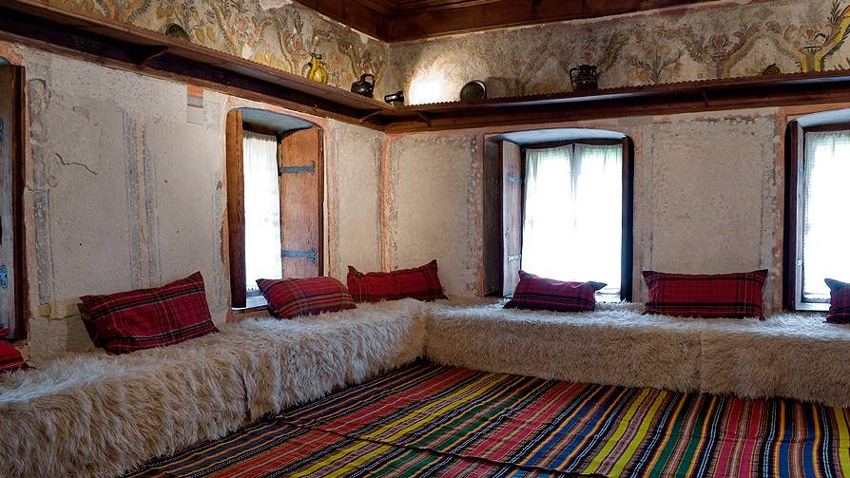
Ivan Hadzhiradonov, however, went bankrupt because cotton started to be shipped from ports in Greece to Trieste. At that time he sold his house to the municipality.
"In 1835 Velyan Ognev arrived to Bansko. He was among the famous artists of the Debar Art School,” Georgi Pitov says. “He arrived here at the invitation of Mayor Lazar German to create the murals in the Holy Trinity church. Then he met the sister of Neophyte Rilski - Sofia Benina. He married her and the municipality offered him the house as part of the payment for his work. He restored the house and painted it with frescoes. This is the first house with frescoes in Bansko. The best preserved are the frescoes in the so-called women’s room. This was the room of the lady in which she used to meet her friends. There are two murals - one depicting Istanbul and the other - Venice. But since the blue colour predominates, it is also called the Blue Room. This is probably the most beautiful place in the house. Sofia Benina is Velyan Ognev’s second wife. Before that he was married to an Italian and travelled across most of Europe. The he arrived in Bansko and created the most beautiful room for his wife. As for the ornaments on the ceiling, they are the same as in the Holy Trinity church. It is believed that the artist first drew them here and when he liked the result, he recreated them on the ceiling of the church."
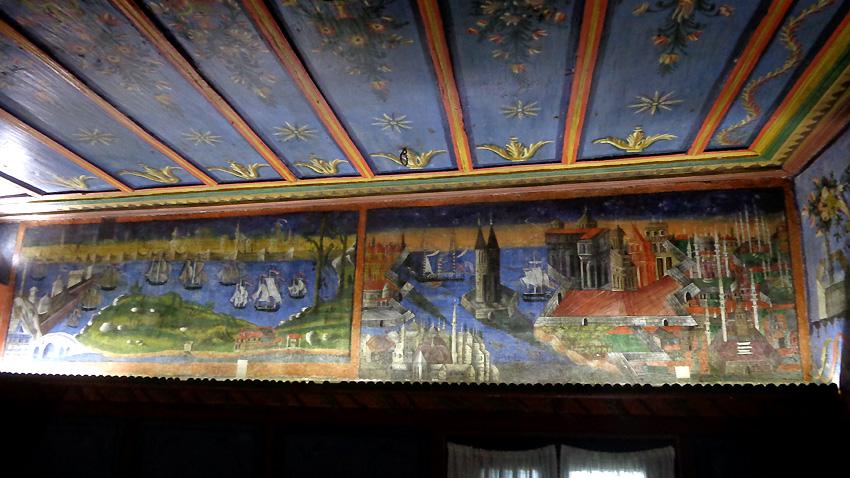
Under the big family room stables were originally located and therefore it was the warmest room. But it was quite dark and Velyan Ognev painted mirrors on the walls to create the illusion of a spacious and bright room. There is a big fireplace here, which served for lighting, heating, cooking, etc.
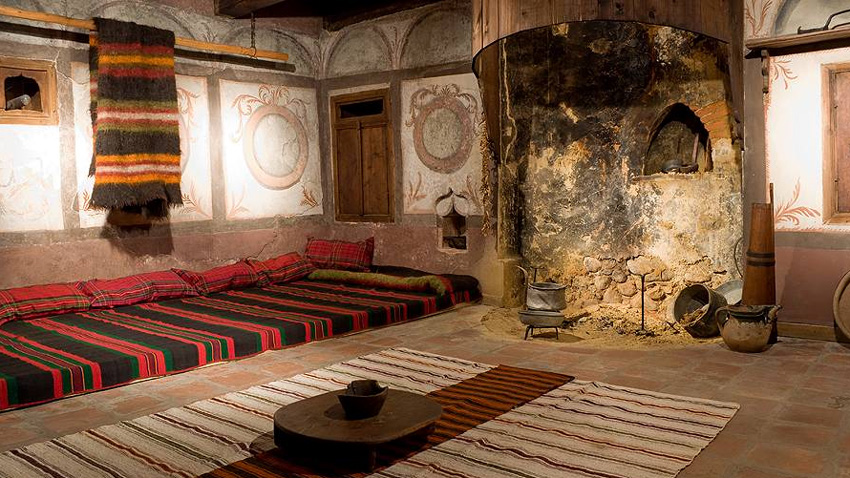
From there one can enter the room of the housewife, where she kept her equipment for sewing, spinning, knitting, etc. Then comes the children’s room. When a child was born they would live in this room together with the parents until the child reached the age of three. After that he or she was transferred to the common room with the rest of the family. To the left there is a room for guests. It is very bright and richly decorated. But since the house had long been without owners before becoming a museum and the roof was in poor condition, many of the frescoes were damaged.
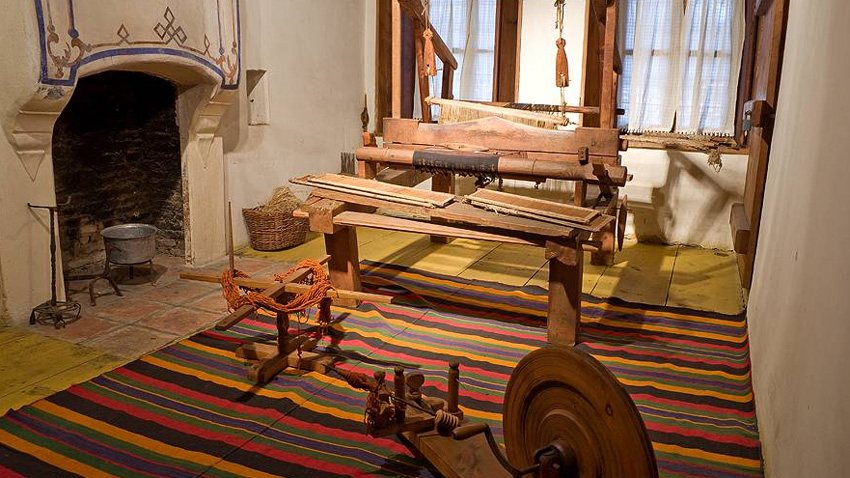
Later experts even discovered that owners after Velyan Ognev painted over some of his murals with white paint. Among the frescoes in the house we can see a scene with wolves. It is believed that they are among the few animals that create a family for life. And if one of the pair dies, the other remains a loner. This was how the artists wanted to show his love to Sofia.
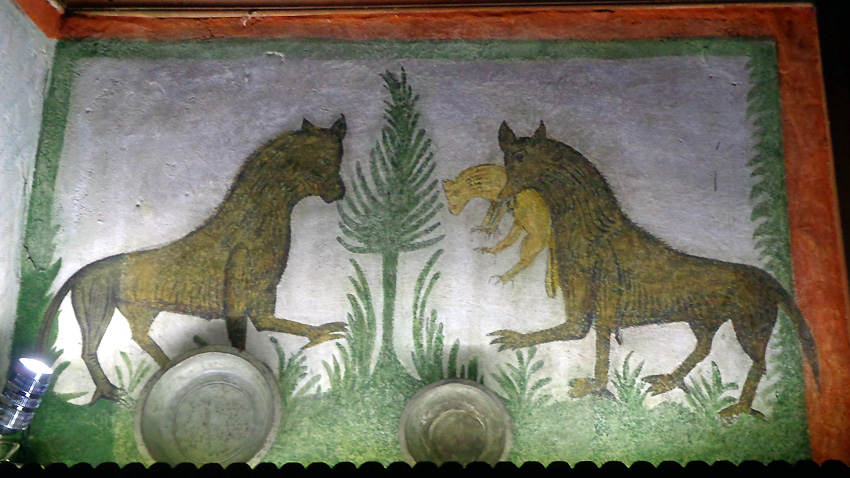
In the summer the family enjoyed spending time on the “chardak” or veranda. One can still see a special corner for rest and a little fireplace used for cooking. One can also see impressive wood carvings. On the first floor there is a workshop and wine cellar. And one interesting detail: in the children's room there is entrance to a hiding place, accessed by a stone staircase. There is also a tunnel linking the house with the neighbours’ one – the Sirleshtova House. In that house there is a very good hiding place and a number of emergency exits.
English: Alexander Markov
Photos: Veneta Pavlova and bulgariatravel.orgThe second day of the Ressurection of Christ (Easter Monday) marks the beginning of the Bright Week, also known as Pascha Week and Renewal Week. The week is called bright, because the Resurrection of Christ symbolizes enlightenment. During the Bright..
The Bulgarian National Emigrant Volunteer Company 4093 was established on October 20, 1951, as part of the U.S. Armed Forces in West Germany. This was not an easy process, but it shows that there was a significant number of compatriots who disagreed..
Built in just a few months by the Bulgarian community in Edirne, Turkey, the church of St. George the Victorious continues to preserve the Bulgarian Orthodox spirit for 144 years now. With the permission of Sultan Abdul Hamid II and with the cooperation..
At the midnight Mass in the Patriarchate of St Alexander Nevsky, the Vicar of the Holy Synod, Metropolitan Gregory of Vratsa, proclaimed the Resurrection..
The second day of the Ressurection of Christ (Easter Monday) marks the beginning of the Bright Week, also known as Pascha Week and Renewal Week. The..
The Bulgarian National Emigrant Volunteer Company 4093 was established on October 20, 1951, as part of the U.S. Armed Forces in West Germany. This was..

+359 2 9336 661
